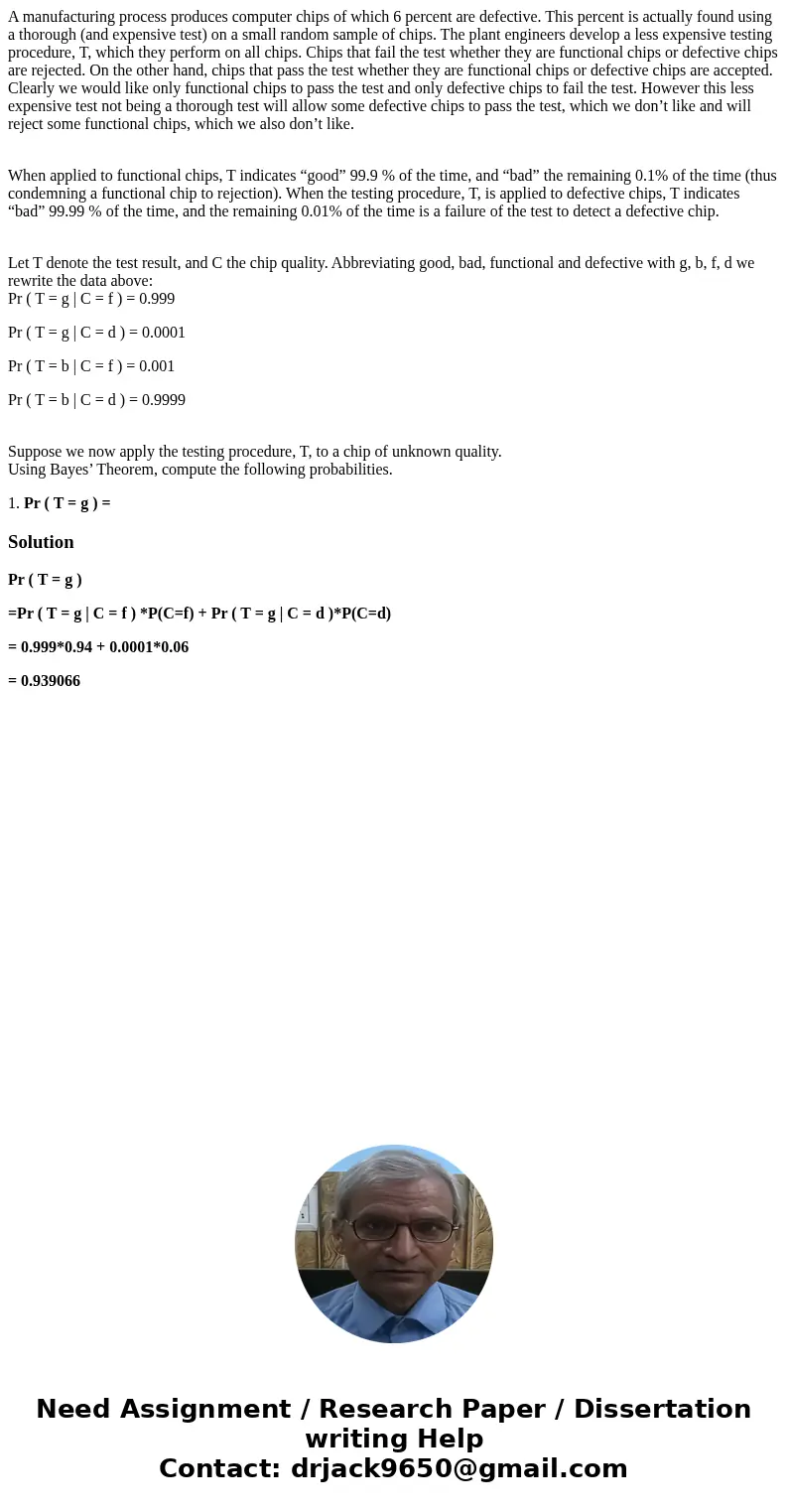A manufacturing process produces computer chips of which 6 p
A manufacturing process produces computer chips of which 6 percent are defective. This percent is actually found using a thorough (and expensive test) on a small random sample of chips. The plant engineers develop a less expensive testing procedure, T, which they perform on all chips. Chips that fail the test whether they are functional chips or defective chips are rejected. On the other hand, chips that pass the test whether they are functional chips or defective chips are accepted. Clearly we would like only functional chips to pass the test and only defective chips to fail the test. However this less expensive test not being a thorough test will allow some defective chips to pass the test, which we don’t like and will reject some functional chips, which we also don’t like.
When applied to functional chips, T indicates “good” 99.9 % of the time, and “bad” the remaining 0.1% of the time (thus condemning a functional chip to rejection). When the testing procedure, T, is applied to defective chips, T indicates “bad” 99.99 % of the time, and the remaining 0.01% of the time is a failure of the test to detect a defective chip.
Let T denote the test result, and C the chip quality. Abbreviating good, bad, functional and defective with g, b, f, d we rewrite the data above:
Pr ( T = g | C = f ) = 0.999
Pr ( T = g | C = d ) = 0.0001
Pr ( T = b | C = f ) = 0.001
Pr ( T = b | C = d ) = 0.9999
Suppose we now apply the testing procedure, T, to a chip of unknown quality.
Using Bayes’ Theorem, compute the following probabilities.
1. Pr ( T = g ) =
Solution
Pr ( T = g )
=Pr ( T = g | C = f ) *P(C=f) + Pr ( T = g | C = d )*P(C=d)
= 0.999*0.94 + 0.0001*0.06
= 0.939066

 Homework Sourse
Homework Sourse